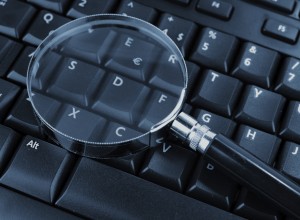5 Advantages Of Having An ESI Protocol For Your Matter
The exercise of thinking through everything that will be needed for your case in discovery is invaluable.
 I am a big advocate of having an ESI protocol for every matter. Drafting an ESI protocol forces you to consider all of the discovery issues in your case at an early stage and provides for the protection of your client’s data during the discovery process.
I am a big advocate of having an ESI protocol for every matter. Drafting an ESI protocol forces you to consider all of the discovery issues in your case at an early stage and provides for the protection of your client’s data during the discovery process.
I can see the look on your faces.
Non-believers have just rolled their eyes. When you don’t know what you don’t know, you think an ESI protocol is just another exercise that is not needed.

Entrepreneurial Law Firms The Key To Legal Career Happiness
Some folks who get it are saying, “Praise the heavens, someone is finally saying what I’ve been saying for years.” Others of you are inherently skeptical in the protocol and want to keep all of your cards very close to the vest.
There are many advantages to having an ESI protocol in your case, no matter the size. Here are five:
- It makes you think through discovery for the entire matter. Historically, litigators have flown by the seat of their pants with discovery — sending, receiving and responding to discovery requests without a real plan. Volumes of data, costs to go through it all, and time to get from the big bucket down to what you actually need for a case make that approach outdated and impossible. Even for small matters.
- A well-drafted protocol will protect your client’s data and interests. Protection against inadvertent waiver via FRE 502(d) or state equivalent is one way of protecting your client’s data and a must have for a protocol. A protocol also presents other opportunities to limit preservation, scope of collection, sources of data, and other ways to reign in your client’s obligations. The strategy on whether it makes sense to include some or all of those is different for every single case.
- You’ll identify sources of data that require additional consideration and planning to collect from and produce data. Not everything is email anymore, and more and more, we see new sources of data that require thought and planning as to how you’ll collect from them and how content will be produced. Those can include project management tools, bank data, social media, slack, CRM systems, procurement, video, mobile devices, databases, etc. Thinking about these early lets you identify cost effective solutions for how to handle them. Sometimes just providing read only access is the best way — other times detailed production specs are required for a source of data. This is another area where cooperation with the other side will save time and money. It’s also where you’ll need to spend time learning about the sources, how data comes out, how to go and get it, and whether you can produce it in a specific format. That takes time and knowledge, and you’ll need to start early. You don’t want to wait until the routine deletion of data has been running for an additional year before you think about it. Even the new Rule 37(e) might not be so forgiving.
- You can leverage the protocol for third-party data. Many of our cases involve data from third parties and attaching the protocol for the case and including that it will apply to third parties is a good way to go. That creates consistency for everyone in form of production (TIFF vs. native, etc.) and saves you from having to negotiate form with each individual party. This is especially compelling when there are sources of data that a third party is less likely to want to produce or when you know the resistance to the cost will be high. We like to send third-party subpoenas with the protocol and with a cover letter stating that we would like to meet and confer on the scope of the response with counsel immediately following receipt. That gets them thinking about it and moving vs. having it sit on their desks for weeks. (Yes, that happens all the time.)
- Your protocol is your discovery blueprint for the case and you’ll go back to it time and time again. Drafting a protocol means you have to sit down and identify data sources, ensure the legal hold is up to date and correct, determine third parties that may be needed (or who need their relationships with your client to be protected), figure out how you’ll handle data (form and manner of production, plus any approach to searching and filtering data), talk about mobile devices, and address any unique issues in the case. On average, we revisit the protocols in place in a matter 10-15 times over the course of a litigation to firm up a position, require compliance, or consider our options for a new issue based on what we agreed to.
I want to be very clear. I advocate using an ESI protocol when you have truly put the work into making a protocol that is appropriate for your case. Pulling a form down and adding the parties’ names is dangerous. If you are going to do that, you may be better off skipping it as you risk agreeing to things that you and your client cannot later meet. And case law is prevalent that ESI protocols are binding on the parties absent written agreement or good cause, and good cause is expensive.
Sponsored

Entrepreneurial Law Firms The Key To Legal Career Happiness

Tackling Deposition Anxiety: How AI Is Changing The Way Lawyers Do Depositions

Luxury, Lies, And A $10 Million Embezzlement

Data Privacy And Security With Gen AI Models
I have talked with several attorneys who know what they are doing in eDiscovery and don’t believe in a protocol in cases where the other side doesn’t insist on it. They love having the advantage of the other side not being able to dictate what they are or are not doing. But that’s a dangerous proposition if opposing counsel wakes up in the middle of the case and gets wise, and case law makes your obligations very clear. If you opt to go without a protocol, be sure you know and understand the law and make an educated decision not to have a protocol.
I’ll go a step further than even saying I disagree with that approach — I think that way of thinking continues to harm our profession and goes against the cooperation that so many judges and rules have stated are a requirement for lawyers. Somewhere along the way, we forgot that our job is to assist dispute resolution and made it that our job is to fight. It’s not a boxing match, people, it’s business. And litigation is a cost center, that detracts from business. Show your clients you care about their business by helping reduce that cost center and you do that by being thoughtful every step of the way. An ESI protocol is one way to do that.
And no, I don’t think the hostility emanating from the other side is a good reason to skip having a protocol. I once had an opposing counsel on a meet and confer be so opposed to the proposed protocol that he asked me if all I do is sit around all day and draft ESI protocols. I assumed it was rhetorical. We filed our proposed protocol with a statement saying opposing counsel refused to engage in a discussion and ended up with getting everything we asked for because of that attitude.
Many courts and judges at the federal level now have proposed orders requiring the parties to discuss eDiscovery and provide the court with a protocol or overview of the issues at the Rule 16 conference. (They are all included in eDiscovery Assistant in the Rules section.) Leverage those.
Even in cases where you never file the protocol with the court, or opposing counsel refuses to sign it, the exercise will reap huge rewards. After 20+ years of litigating complex engineering design cases and 15 of those focused on discovery, I can tell you that the exercise of thinking through everything that will be needed for your case in discovery is invaluable. You’ll go back to that protocol again and again.
Sponsored

Data Privacy And Security With Gen AI Models
Law Firm Business Development Is More Than Relationship Building
 Kelly Twigger gave up the golden handcuffs of her Biglaw partnership to start ESI Attorneys, an eDiscovery and information law Firm, in 2009. She is passionate about teaching lawyers and legal professionals how to think about and use ESI to win, and does so regularly for her clients. The Wisconsin State Bar named Kelly a Legal Innovator in 2014 for her development of eDiscovery Assistant— an online research and eDiscovery playbook for lawyers and legal professionals. When she’s not thinking, writing or talking about ESI, Kelly is wandering in the mountains of Colorado, or watching Kentucky basketball. You can reach her by email at [email protected] or on Twitter: @kellytwigger.
Kelly Twigger gave up the golden handcuffs of her Biglaw partnership to start ESI Attorneys, an eDiscovery and information law Firm, in 2009. She is passionate about teaching lawyers and legal professionals how to think about and use ESI to win, and does so regularly for her clients. The Wisconsin State Bar named Kelly a Legal Innovator in 2014 for her development of eDiscovery Assistant— an online research and eDiscovery playbook for lawyers and legal professionals. When she’s not thinking, writing or talking about ESI, Kelly is wandering in the mountains of Colorado, or watching Kentucky basketball. You can reach her by email at [email protected] or on Twitter: @kellytwigger.







